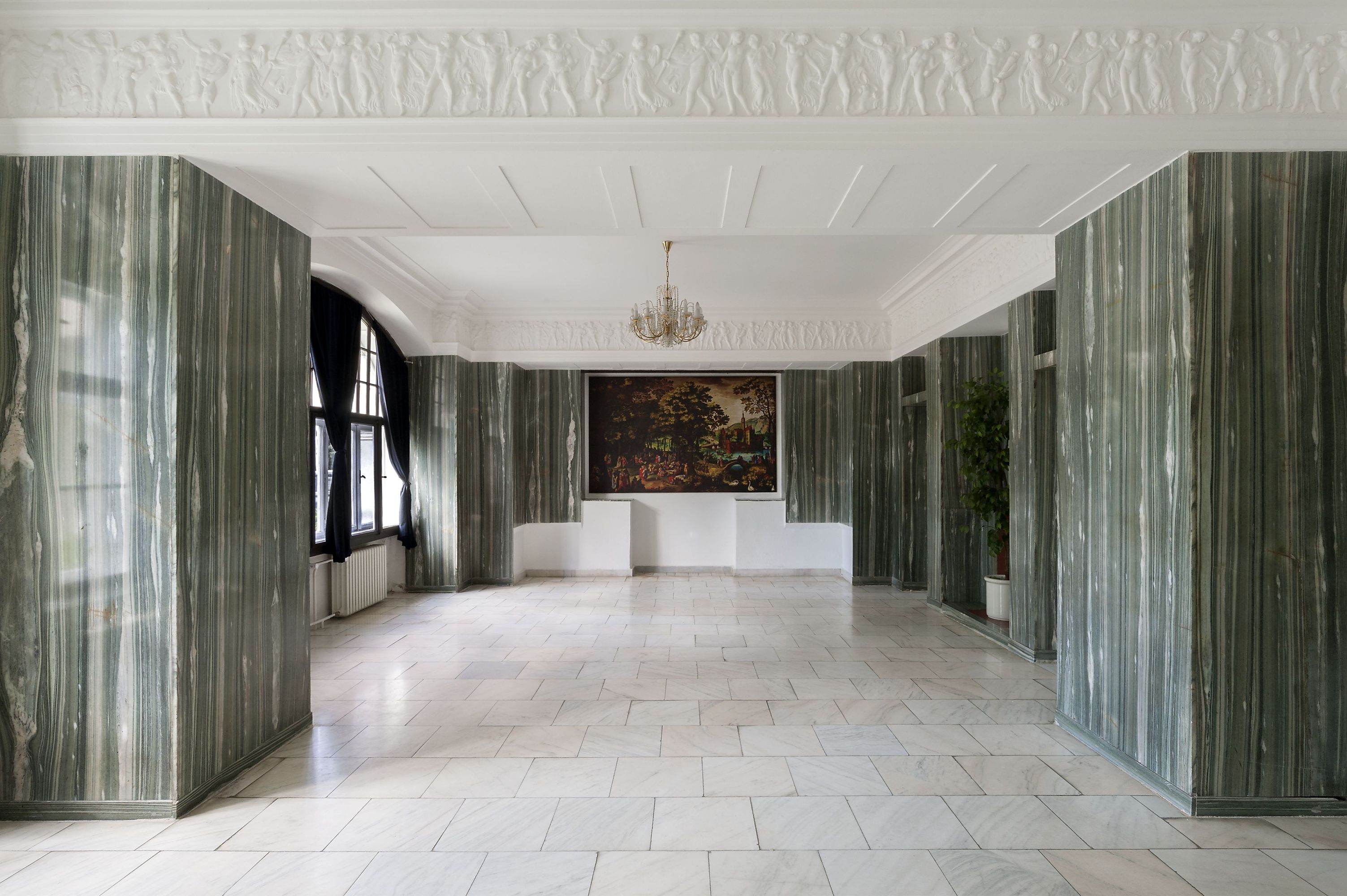
Bauer Chateau, Brno Exhibition Centre

Toilets
Barrier-free access
Tour in English
The Bauer Chateau is a Neoclassical dwelling from the first half of the 19th century and the oldest building in the Brno Exhibition Centre. Around 1925, some of the rooms were redesigned by the world-renowned architect Adolf Loos for Viktor Bauer Jr. Notable for its history, the area also features a velodrome built on the site of the original cycling track made of clay from 1889.
The extensive area known as Bauer’s Ramp (now the Brno Exhibition Centre), bounded to the west and southwest by the Svratka River, to the southeast and east by Křížkovského street, and to the northeast by Hlinky street, belonged to the Jewish industrialist Moritz Bauer (1812–1895), who hailed from Rosice near Brno, from the mid-19th century. It was here, on the left bank of the Svratka River at the site of an older, essentially Baroque complex of farm buildings with a Classicist, late-Empire-style chateau Bauer purchased in 1849 (architect unknown), that he established his family estate. He built a sugar factory nearby in 1851, later expanded with a refinery in 1878 in partnership with his son Viktor Sr, who built the 1889 cycling track.
Of the historic buildings, a complex of halls, a small railway station building, and the chateau have been preserved. The chateau stands at the centre of what remains of its original park. Between 1922 and 1925, it underwent significant renovations: its facade, windows, roof, gutters, plumbing, drains, and central heating were updated, and old parquet floors were restored. During this period, the Bauers sold the surrounding land for the construction of the modern exhibition grounds in 1928.
The two-storey chateau has an elongated rectangular groundplan oriented northwest to southeast and comprises three sections. Its ground floor features rusticated surfaces, while the upper floor displays smooth surfaces divided by cornices, window frames, and parapet panels. The six-pane casement windows are painted white. The interior updates by Adolf Loos include marble panelling in the dining room and a stucco frieze; it is the only surviving example of his work in his hometown. The main entrance features glazed doors with a semicircular transom. The main facade faces northeast, overlooking a triple-curved paved courtyard with a central fountain, once adorned by a statue of a trumpeting putto. The adjoining driveway is framed by an alleyway that originally extended to Hlinky street.
The current exhibition in the chateau showcases the history of the site, dating back to its origins in 1815. Visitors can explore the preserved architectural elements and learn about its evolution from a private estate to an integral part of the Brno Exhibition Centre.
For loading the interactive map, please click on the map area.
For loading the interactive map, please click on the map area.